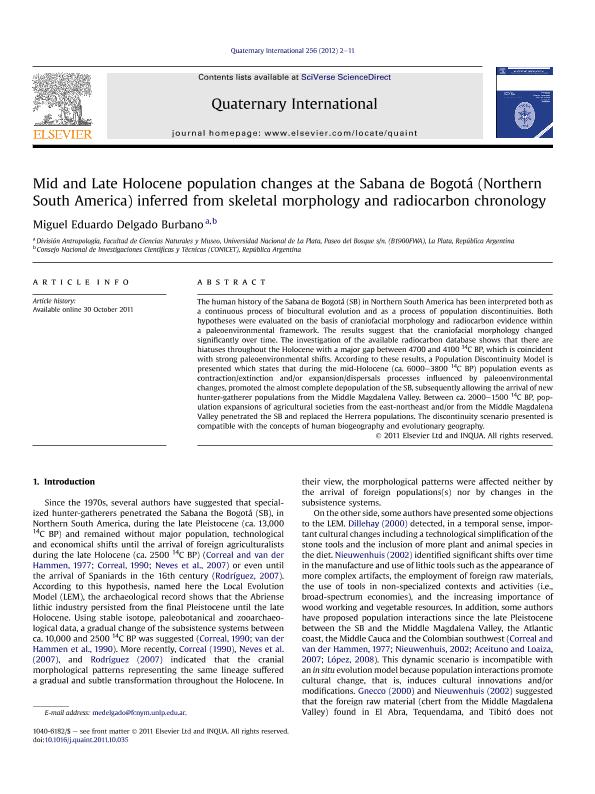Artículo
Mid and Late Holocene population changes at the Sabana de Bogotá (Northern South America) inferred from skeletal morphology and radiocarbon chronology
Fecha de publicación:
03/2012
Editorial:
Pergamon-Elsevier Science Ltd
Revista:
Quaternary International
ISSN:
1040-6182
Idioma:
Inglés
Tipo de recurso:
Artículo publicado
Clasificación temática:
Resumen
The human history of the Sabana de Bogotá (SB) in Northern South America has been interpreted both as a continuous process of biocultural evolution and as a process of population discontinuities. Both hypotheses were evaluated on the basis of craniofacial morphology and radiocarbon evidence within a paleoenvironmental framework. The results suggest that the craniofacial morphology changed significantly over time. The investigation of the available radiocarbon database shows that there are hiatuses throughout the Holocene with a major gap between 4700 and 4100 14C BP, which is coincident with strong paleoenvironmental shifts. According to these results, a Population Discontinuity Model is presented which states that during the mid-Holocene (ca. 6000-3800 14C BP) population events as contraction/extinction and/or expansion/dispersals processes influenced by paleoenvironmental changes, promoted the almost complete depopulation of the SB, subsequently allowing the arrival of new hunter-gatherer populations from the Middle Magdalena Valley. Between ca. 2000-1500 14C BP, population expansions of agricultural societies from the east-northeast and/or from the Middle Magdalena Valley penetrated the SB and replaced the Herrera populations. The discontinuity scenario presented is compatible with the concepts of human biogeography and evolutionary geography.
Archivos asociados
Licencia
Identificadores
Colecciones
Articulos(CCT - LA PLATA)
Articulos de CTRO.CIENTIFICO TECNOL.CONICET - LA PLATA
Articulos de CTRO.CIENTIFICO TECNOL.CONICET - LA PLATA
Citación
Delgado Burbano, Miguel Eduardo; Mid and Late Holocene population changes at the Sabana de Bogotá (Northern South America) inferred from skeletal morphology and radiocarbon chronology; Pergamon-Elsevier Science Ltd; Quaternary International; 256; 3-2012; 2-11
Compartir
Altmétricas




